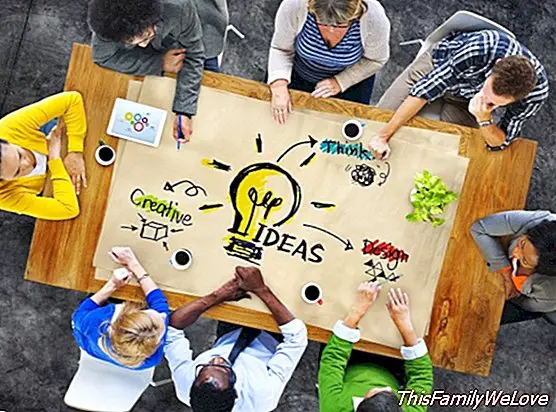Creativity: traits of a creative person

The creativity it is not something exclusive of a type of people nor is it linked to any human activity as such. Although some people may be born more gifted than others for creativity because they use more of the left part of their brain, it is also true that they can be taught to be creative. However, there are a series of 7 common features shared by creative people.
The balance of creative ability
Creativity requires the implementation and balance of three types of capabilities: synthetic, analytical and practical.
1. The synthetic is what we normally consider creativity: the ability to go beyond what is normal, what everyone knows or supposes, to generate new and interesting ideas. Good synthetic thinkers see connections that others do not see.
2. Analytics is the ability to analyze and evaluate ideas recognizing the best.
3. The practice is what makes you realize if an idea "can be sold or not" to others.
7 traits of a creative person
Maybe it is something difficult to define, but if we analyze those people who have stood out for their creativity we could find these features in common. This will help us discover if our son has a creative genius.
1. It calls into question what everyone accepts.
Those who dared to question the ideas that everyone accepted were criticized, or even persecuted, although later they had the recognition of all. If we accept everything without questioning it, we will never see different alternatives. When our children ask, they simply ask for explanations for what we accept without questioning.
In that case, they exercise in their own way the same independence as the great scientists and inventors. Einstein came to emphasize that this childhood curiosity was the seed of creativity. In the adult it manifests and develops with the critical spirit. There are many examples of this characteristic, but we could say, for example, that Wright brothers challenged the old belief that humanity would never fly.
2. Recognize patterns and regularities.
This means perceiving similarities or significant differences in systems, objects, ideas, events or physical phenomena. By looking for these regularities, we try to give coherent form to the world and prepare ourselves to make predictions. Detecting patterns of behavior in the unknown is a way to create order in chaos.
Science is full of examples of these creative abilities. Gregor Mendel, when crossing different kinds of peas, observed regularities that led him to a new idea about the inheritance of characters. The tectonic theory Of plates is another example of how the correspondences found in the oceanic bottoms took to the scientists to a new idea on the continuous change of the terrestrial crust.
3. See things differently.
Or, which is the same, to turn the familiar into a stranger and miss it into a familiar one. A new perspective A new image Be able to see the new in what we see every day. This is also an aspect and a component of creativity. Who is capable of saying a new adjective on the table before us, of imagining the cage from the perspective of the canary, of representing at the same time the exterior and the interior of a telephone, of painting the passage of time on the grapes of a fruit bowl?
4. Imagine new relationships.
Creating connections is something like the moment of a detective novel in which the author suddenly presents the relationship between two events or characters. By creating associations we can apply knowledge to new situations or systems, draw conclusions, imagine causes. For example, Edward Jenner realized that smallpox never attacked the milkmaids, and by establishing a relationship by saying that the immunization they had was due to having been exposed to the benign cowpox it led to the idea of vaccination.
5. Risk and persevere.
That is, to dare to start new ways or think of new ideas without having prior control of what may come as a result. Creative people must be able to take a risk, without being gripped by the fear of being wrong. They must also have proof, to repeat an experience when the first results are not satisfactory, or they encounter difficulties.
Both Columbus and Magellan, Marco Polo and other explorers faced risks when leaving in their boats for unknown seas. Alexander Graham Bell undertook new adventures even after having succeeded with the telephone. Some, like the steel lung, worked, others, like the photophone, no. Failure is useful information, because eliminating possible alternatives helps us narrow the range of solutions. The most elementary way to learn is by "trial and error": take a step, fall, get up, take another step ...
6. Take advantage of the opportunities.
And that means knowing how to take advantage of unexpected results. It seems that the creative person knows how to see things that happen by chance and Pasteur already said that chance favors only prepared minds. Charles Goodyear discovered the rubber vulcanization process by chance. I experimented with various chemical substances, trying to find applications for virgin gum. One day, inadvertently, a few drops of rubber fell on a hot stove. When he saw how the stained area looked, it occurred to him that the heat would solve his problem.
7. Work as a team.
It may seem strange to anyone who thinks of creativity as something individual, but the history of scientific discoveries also suggests it. A network is stronger than the set of threads separately. Teams of people serve to exchange ideas, points of view, questions and stimuli. The team is essential for the contrast, to enrich perspectives, to detect errors.
Marisol Nuevo Espín




